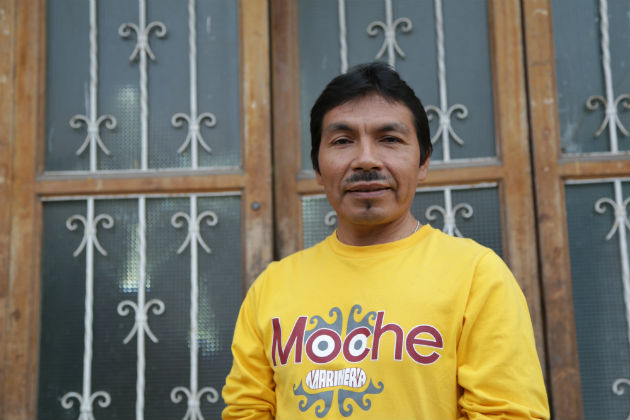Marinera Mochera: Dancing and Sustaining Traditions Barefoot

Born in the town of Moche in northern Peru, Ronald Fernández has dedicated his life to preserving and promoting the traditional Mochera style of Marinera, the national dance of Peru. He has received many honors for his work in art and cultural promotion, and this year he will be representing the regional art form at the Smithsonian Folklife Festival’s Perú: Pachamama program.
In December 2014, the Peru curatorial team interviewed Fernández about his career in Marinera dance and the importance of the Marinera Mochera style.
How did you learn to dance the Marinera?
We learned the Marinera the way it is learned in rural communities: from our parents. We don’t go to an academy or school to learn. We learn it through generational transmission—grandparents to parents, parents to children, those children to their children. The Marinera competitions express the spirit of our community. Together we are part of a long journey, because we all know its history. When the women competed in contests in Trujillo (the major city five miles from Moche), they did not dance barefoot like we see now. They all wore heels.
Why do the Marinera Mochera dancers dance without shoes?
The contests in Trujillo began in the year 1960. Eventually they started inviting all the towns around the city. When the invitation came to Moche, the mayor decided to send an envoy to represent them. So they had a contest to determine who would represent the town in Trujillo, and they invited several residents to participate. My sister Olga was the winner.
My parents decided to represent Moche by including the characteristics of its people in Olga’s performance. So Olga wore the mochera (dress), just like she wore every day. Just like how we have jeans now, that was her everyday dress. She also stood barefoot, like they did back home on the farm. That was the beginning of the Mochera custom, the first time Marinera had traditional Mochera characteristics. That competition was in 1968. Since then, and probably forever in the future, the women dance barefoot like Olga.
I performed for the first time in the same way, without shoes. But performing without shoes in Trujillo was practically an insult to society. Because we were dancing in great salons and without shoes, we shocked many people. But we kept it up because it was our identity. We defended it, we preserved it, and we promoted it. It was what was familiar to us, so we had the strength to resist, to not disappear.
What do you see as the future of Marinera dance?
The twelve styles of Marinera all show the nuances of their different regions. This is the idea that we defend. But in Marinera competitions on the worldwide level, there has been a great fusion of Marinera into one distinct style of dance, which is causing the regional differences to fade away.
I promote the Mochera style. Mochera costumes may seem non-traditional to others, but it’s because of those differences that we have reached many people who were not interested in Marinera before. I want my daughter to learn the Mochera style too, so I promote that style.
The Perú: Pachamama program at the 2015 Smithsonian Folklife Festival opens June 24. Visit the National Mall to see Ronald Fernández and his Marinera Mochera dancers in action. This interview was translated from Spanish and condensed by media intern Georgia Dassler.

